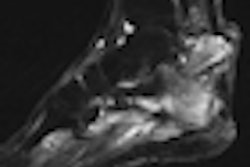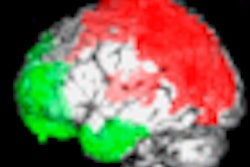The timing of treatment for breast cancer patients receiving external-beam radiation therapy (EBRT) following intraoperative radiation therapy (IORT) may be an important factor in preventing toxicity. Patients who receive EBRT sooner than five or six weeks after receiving IORT may have a higher risk of developing chronic late toxicity, according to a study by German researchers.
Lead author Dr. Frederik Wenz, a radiation oncologist, and colleagues at the University of Heidelberg's University Medical Center Mannheim correlated the timing interval between IORT and EBRT with the occurrence of late-tumor-bed fibrosis and other chronic toxicities. The results of the analysis of 48 patients who had received this type of treatment between March 2002 and March 2004 are reported online in the Breast journal (July 22, 2008).
IORT for partial-breast irradiation is being used during breast-conserving surgery either as a tumor bed boost followed by EBRT or as a single treatment. When IORT is given as a boost during breast-conserving surgery followed by EBRT, the timing and sequencing may be crucial for a patient's outcome. Local control rates may decrease due to tumor cell proliferation if there is a long interval between IORT and EBRT, but tumor bed fibrosis has been reported when the overall treatment time is short.
Patients received a 20 Gy dose of 50 kV x-rays prescribed to the applicator service during breast-conserving surgery. EBRT was initiated after completion of wound healing, and for nine patients, after chemotherapy, with the patients receiving a dose of 46-50 Gy in 2-Gy fractions. Forty-five of the original 59-patient cohort received endocrine therapy, initiated eight to 14 days after surgery or after completion of chemotherapy.
Patients had follow-up visits every six to 12 months during a median time period of three years (range, 30-56 months). They were assessed for clinical late toxicity using a modified LENT SOMA scoring system.
Eighteen of the 48 patients, or 37.5%, had symptoms of toxicity three years after treatment. However, chronic skin toxicity was mild, with fewer than 10% of the patients experiencing hyperpigmentation and/or telangiectasia (redness in the skin caused by the permanent enlargement of blood vessels).
The median time interval between IORT and EBRT was 36 days. The median interval for 18 patients who developed chronic and higher-grade toxicity was 29.5 days. Of the 12 patients who developed a higher-grade fibrosis, two-thirds had a time interval below the median. A second- or third-degree fibrosis was developed by 42% of the patients receiving EBRT within 14 to 28 days after IORT treatment. Two of the three patients with third-degree fibrosis had a time interval of 20 days.
Types of toxicity exhibited by percentage of patients at 36 months
|
"Although the number of toxicity events in this report is low, there was a clear, statistically significant and clinically relevant tendency for increased late toxicity when EBRT was initiated early after IORT," Wenz and colleagues concluded. "Eight out of 12 higher-grade fibroses, five out of six retractions, and four out of five breast pains were found when the IORT-EBRT interval was below the median of 36 days. Starting EBRT about five to six weeks after IORT appears to be associated with a decreased risk of chronic late toxicity."
By Cynthia Keen
AuntMinnie.com staff writer
November 17, 2008
Related Reading
Accelerated breast radiotherapy leads to less toxicity, radiation exposure, September 10, 2007
Cosmetic results good, toxicity mild with accelerated partial-breast irradiation, March 20, 2006
APBI variables affect late tissue toxicity, cosmetic outcome, February 13, 2006
Intraoperative radiotherapy good alternative after breast-conserving surgery, September 19, 2002
Copyright © 2008 AuntMinnie.com



















